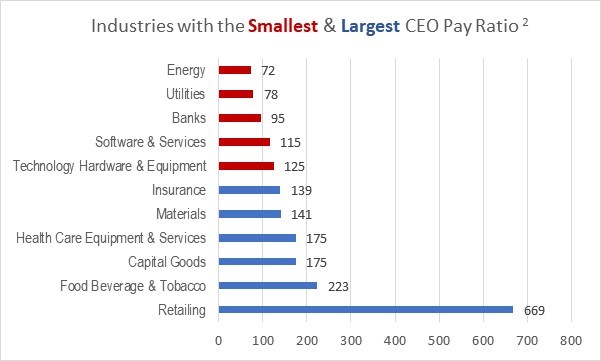NFPCC Original Article: Reactions to CEO Pay Ratios – the Destructiveness of Double Standards
The divisiveness of politics is reaching extremes in today’s climate. It’s incredible how the same story can be told by two different reporters and both will express the exact opposite information as fact. Walter Cronkite famously stated:
“We all have our likes and our dislikes. But… when we’re doing news – when we’re doing the front-page news, not the back page, not the op-ed pages, but when we’re doing the daily news, covering politics – it is our duty to be sure that we do not permit our prejudices to show. That is simply basic journalism.”
With the never-ending amount of information distributed, the public has become more skeptical and now more than ever it’s important that news agencies report results objectively and with exact precision. With the backdrop of media sensationalism and opinion pieces comes a new source of material for political and social divisiveness: CEO Pay Ratio disclosures.
Three months into the new year and the proxy disclosures begin, we’re seeing the first reporting around CEO Pay Ratios. The SEC rule was implemented on January 1, 2017 requiring public companies to measure the ratio of compensation between their CEO and the company’s median employee pay. One goal for requiring CEO Pay Ratio reporting was to highlight companies whose ratios were out of line from their industry.
The Wall Street Journal reported that pay ratios will vary greatly—even dramatically—across broad swaths of the economy, driven in large part by differences in worker pay. Consider this chart that shows the bottom and top 5 industries when comparing pay ratios:
Unfortunately, the statement that these swings are due to difference in pay is misleading or at best too simple. The big swings in the CEO Pay Ratios are attributable to a number of factors:
- Did the reporting companies choose to exclude international or contract workers when identifying medians?
- If included, what is the ratio of international workers compared to US? A company with more employees in Mexico will have a larger ratio than one that employees 100% US employees.
- In determining median pay, companies must include part-time, temporary and seasonal workers, but have some leeway in accounting for independent contractors. They may exclude up to 5% of the workforce, but only non-U.S. workers.
These differences in reporting illustrate the fact that the CEO Pay Ratio is problematic: the SEC has stated it does not expect CEO Pay Ratios to be comparable across companies because of the variety of methodologies allowed for computing median employee pay.3 This distinction is unlikely to make its way into media reports. For these reasons, we’re encouraging committees to be aware of how your company compares to your peers but to avoid making compensation decisions based on these rankings.
Another concern to consider is that employees may be bothered not only by how many multiples higher the chief executive is paid but by where they fit in with their peers. Understandably, employees want to be above the median pay and when they are not, it impacts productivity and job satisfaction. Because the median employee calculation is based off of W-2 wages, significantly more than half of the employees will perceive they are paid below the median employee.
Compounding that concern is timing. Corporations have just received a very large corporate tax cut, and the ratios are being disclosed. This windfall could lead employees to question where the tax cut is being spent especially if their reward programs aren’t improved.
Even so, some companies could turn their pay ratios into business promotion. It’s reasonable to assume that consumers, when given the choice, will select companies with more equal pay compared to one with a large wage gap.
As this proxy season rolls out, this will be the first time CEO Pay Ratios will be extensively reported by the media. It could be that the issue is drowned out by the barrage of other topics. Our advice is to expect the CEO Pay Ratio to become another aspect of the ongoing societal debate around income inequality and wealth concentration. Which with careful planning, can be addressed proactively rather than waiting for your “fifteen minutes of fame”.
2 How Does the Boss’s Pay Compare to the Rank and File? Wall Street Journal, Printed article from 2 February 2018
3 “Division of Corporation Finance Guidance on Calculation of Pay Ratio Disclosure.” The U.S. Securities and Exchange Commission. 21 Sept. 2017.







